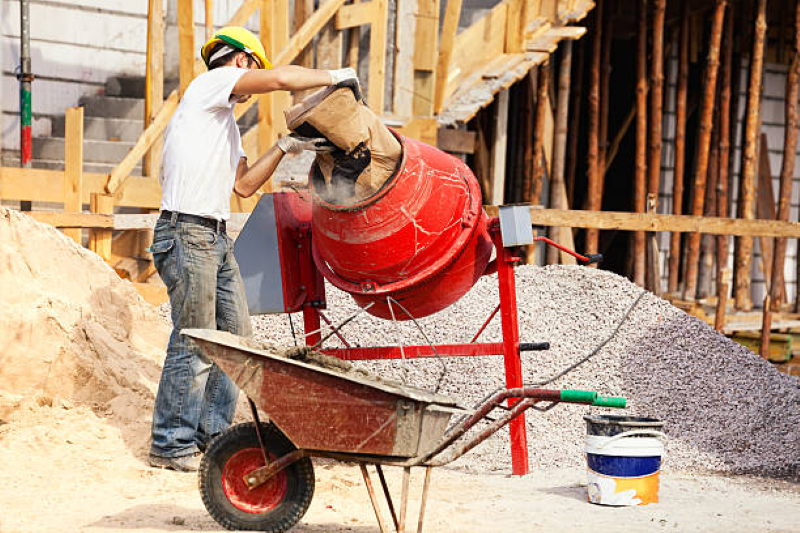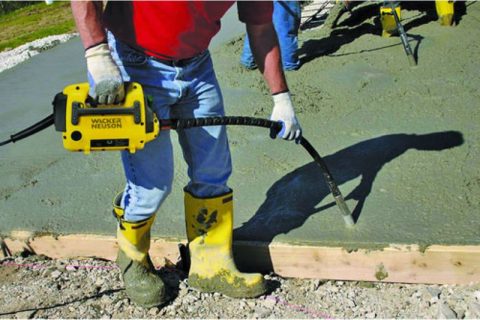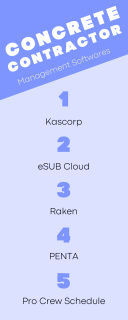Concrete contractors must always have their complete equipment set. To efficiently control their team, they must be fully updated on the newest construction project management concepts and construction management technologies.
Furthermore, they require a large amount of equipment for their profession. Contractors can pick between project management software and construction scheduled software on the construction management side. Each includes useful tools to assist them to remain on top of things, such as time monitoring and staff planning.
Here is a list of essential Concrete Contractor Equipment that is necessary in order to perform good work efficiently
Equipment For Site Preparation
Compactors
A sturdy and strong tamped stone base is among the most crucial elements to perform for concrete construction to survive and stay stable. A compactor aids in the placement of stone or aggregate at the location of the concrete slab if it is to be prepared with any form of sub-base.
Tampers
When working with low slump concrete, a tamper is used to press the aggregate beneath the slab surface. Some varieties are utilized while standing on wet concrete and roller types that can be used from the slab edge. It aids in ensuring that the stone base is sufficiently tamped before the addition of rebar.
Level
The slab surface and the sub-base must be level. Whereas a normal long-line level can be used, a laser level is more precise, reduces human mistakes, and is less time-consuming before and after pouring. Utilize a level to ensure that the slab is equal.
Vapor barriers
Vapor barriers are not required for every concrete job, but they are a useful product to have on. Vapor barriers are products that keep moisture from penetrating the concrete slab and are installed before pouring.
Equipment For Safety
Gloves
Most construction labor, particularly concrete work, necessitates the usage of hands. As a result, the hands are subjected to a great deal of physical stress and strain. Aside from transporting and mixing, many mixes include admixtures that can cause serious blisters when exposed to undressed skin for a lengthy period.
Rubber Boots
On a job site, your feet, like your hands, require covering. Rubber boots protect your feet from falling debris, unpleasant surfaces, and concrete touch with your feet. Moreover, because concrete is tough to clean, the rubber material allows you to quickly clean your boots.
Safety glasses
Usually, construction sites require protective eyewear for all professions. Safety glasses are a type of Safety Equipment that employees use to safeguard their eyes. When grinding, drilling, cutting, or trowelling power concrete, safety glasses operate as a barrier to safeguard the eyes from any form of external particles.
Equipment For Pouring Concrete
Concrete Mixer
Mixers are one of the most important parts of equipment a concrete contractor must-have. They fully mix the concrete for maximum resilience and power. You want to make sure your concrete is fully mixed, whether you’re mixing in a vehicle, a portable mixer, or a wheelbarrow for optimal durability and longevity.
Screed
Screeds are straight, long, stiff tubing or boards intended to flatten and roughly balance wet concrete immediately after it has been placed. Screeds come in various forms and can even be project-specific, such as those used to construct concrete roads.
Concrete floats
Floats are classified into two categories. The first type of float is a bull float. After the screed process delivers the first run, these wide-bladed tools are utilized to smooth ridges and cover concrete gaps. Magnesium, sometimes known as mag floats, comes next. Small handheld equipment is typically applied to float slab edges or complete work on smaller slabs.
Kneeling Boards
Kneeling boards are especially good for hand troweling. They hold your body on wet concrete while helping you to travel smoothly across the slab surface.
Rake
A rake is useful for swiftly spreading wet concrete more properly into position. Concrete rakes have a scooped blade for simple pre-leveling. They also include a tine on the back for positioning the rebar or mesh before the concrete hardens.
Shovels
Shovels are very common equipment that serves an important role. This helpful instrument is used to spread the concrete over the field for smaller purposes and fill in gaps left by the pouring stage and mix manually.
Trowels
Trowels, like shovels, are portable equipment designed to help smooth concrete surfaces before applying finish coatings and allowing them to cure. There are several sorts of trowels for different kinds of concrete construction. Hand-trowelling is best for small slabs, while power trowels are excellent for bigger ones.
Thermo-hygrometer
A thermo-hygrometer is an excellent device because ambient temperatures have a considerable impact on drying time. It measures relative humidity (RH) and temperature surrounding the slab to assist workmen with remediation solutions to shorten drying time.
Vibrators
Concrete vibrators are powerful instruments to remove extra water and trapped air from concrete mixes. This will aid in avoiding potential issues that might affect medium to high slump concrete.
Wheelbarrow
Wheelbarrows are a basic yet useful instrument for concrete work on the job site. They are designed to carry and transfer small amounts of supplies like cement, concrete, stone, sand, and working equipment around the job site.
Equipment For Finishing
Broom
Brooms aren’t simply for clearing up messes on the job. A broom finish is commonly applied to a concrete slab. A broom is dragged over the surface of an almost-dry slab to make it slip-resistant.
Moisture Meter
Concrete moisture meters are ideal for measuring the moisture levels of curing slabs on the spot. Although, like the calcium chloride technique or the hood technique, this equipment simply indicates surface conditions.
Edger
Concrete edgers provide a nice rounded edge around the slab’s perimeter, which assists the slab in withstanding cracking and spalling damage once the forms are withdrawn. A little trowel with one bent side is what an edger seems like.
Grinder
Grinders are required when a concrete surface is over-trowelled and extra moisture is caught inside. Moreover, these tools can improve the visual value by providing a smooth appearance.
Drills
Hammer and power drills are often required after the concrete has been set and smoothed to put anchors in the concrete, drill holes to measure humidity level while the concrete cures, and drill holes for prospective connections and future building.
Hand sprayer
After totally drying, slabs for outside concrete work are frequently coated with a final curing agent. You can do this more properly with a hand sprayer.
Moisture retarder
Vapor or moisture retarders keep moisture out of the completed concrete slab. These are often installed beneath or below grade slabs.
Polisher
When the concrete slab is completely dry, a polisher can be used to provide a final surface effect. A polisher can perform everything from delicate surface smoothing for safety and grip to a brilliant aesthetic finish.
Relative Humidity Test Kit
Although a thermo-hygrometer is beneficial, it only measures moisture at the surface. On the other hand, an RH test kit offers an accurate moisture reading of the inside state of a drying slab. You can see why it is an essential concrete contractor’s equipment.
Saws
Saws can be used for a variety of tasks in the concrete industry. Circular or reciprocating saws can be utilized to cut forms or rebar on the worksite. They can also be utilized to address issues that arise beneath the slab. To fix any problem, saws can assist cut a section of the concrete after being set and dried.
Tape Measure
Concrete construction necessitates precision and accuracy in everything from evaluating the components of a mixture to the size of a slab placing. Tape measurements are useful to have on hand for the latter reason. They can also be utilized to check placement and mapping before permanently installing the slap.
Software Management Tools
The ideal project management software helps you control concrete jobs while enhancing production and efficiency. Your concrete contracting business will thrive if you use high-quality management software.
Look at the software tools concrete contractors require, whether you’re an experienced pro or a novice:
Conclusion
While getting your concrete contractor equipment at the beginning may be costly, it will definitely be worth it in the long term. Consider it an investment. You can accomplish a good job if you have a collection of high-quality tools and equipment. As a result, your customers will be ecstatic, spread the word, and bring you additional business. You’ll quickly recover your investment. Furthermore, robust equipment will last you many years, letting you change them less regularly, saving you money.




Your enlightening blog post eloquently highlights the wide range of equipment essential for the prosperity of any concrete project. From mixers guaranteeing the perfect combination of materials to finishers that impart a flawless touch to the final outcome, each component plays a crucial role in creating durable and visually appealing structures. Here at Smyrna Concrete Company, we fully appreciate the significance of specialized equipment in achieving outstanding outcomes.